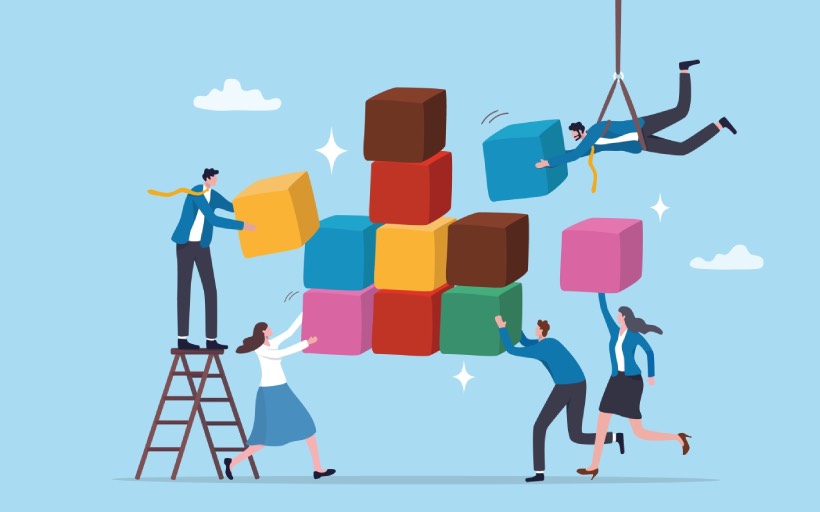Key Takeaways
- Selecting a data governance framework is an essential first start for managing data as a strategic asset.
- Ensure that the framework you choose is adaptable and includes a culturally appropriate structure with sufficient sponsorship support.
- Existing data governance programs can be improved by the selection and implementation of a data governance framework to support growth and sustainability.
- There are several widely used data governance framework models; all have some common components.
Overview of Data Governance
In the 21st century’s data-driven economy, organizations are inundated with vast volumes of data. However, without proper oversight, this data can become fragmented, inaccurate, and not compliant with current regulations and laws. Data governance is the discipline that ensures data is managed as a strategic asset. It encompasses policies, procedures, roles, and technologies that ensure data quality, security, accessibility, and compliance across the data’s lifecycle. Data governance is the core function of enterprise data management.
What Is a Data Governance Framework?
A data governance framework is a structured model that defines how an organization manages its data assets. It outlines the rules, roles, processes, and technologies required to ensure data is trustworthy, secure, and aligned with business objectives. The framework acts as a blueprint for consistent data oversight, enabling organizations to make informed decisions, meet regulatory requirements, and foster collaboration across departments.
Much more than guidelines, a data governance framework makes the function intentional, sustainable, and fully integrated with business and IT strategies.
Frameworks translate the philosophy of governance into operational reality. They define how decisions are made, policies and processes are developed and implemented, responsibilities are assigned, results are communicated, and data-related priorities are established.
Using a data governance framework to guide the formation and execution of the data governance program enables it to become part of everyday workflows and procedures across the organization.
Data Governance Bootcamp
Learn techniques to implement and manage a data governance program. (Use code Cyber2025 to save 25% through December 8, 2025!)

Why Your Organization Needs a Data Governance Framework
A data governance framework is essential for any organization aiming to manage data as a strategic asset. By assigning clear ownership and accountability, implementing a data governance framework allows the organization to foster trust in data across departments, enabling consistent and accurate reporting, reducing data silos and ensuring consistent, trustworthy information across systems. An effective data governance framework can also support audit readiness, risk mitigation, and ethical data use.
Key Elements of a Data Governance Framework
A robust data governance framework typically includes the following components:
- Vision and strategy: Outline long-term goals for data governance (e.g., data trust, compliance, data monetization). Connect the data governance function to business objectives and strategic goals.
- Guiding principles: Articulate core beliefs such as transparency, ownership, collaboration, literacy, or privacy. Principles drive behaviors and resolve policy conflicts.
- Data stewardship: Assign responsibility for maintaining data quality and compliance.
- Data quality management: Establish processes for validation, cleansing, and profiling.
- Data management processes: Define how data is created, stored, accessed, and shared.
- Technology infrastructure: Use tools like data catalogs, metadata repositories, and security systems.
- Policies and standards: Codify rules for data definition, data classification, retention, and usage.
- Roles and responsibilities: Clarify ownership, stewardship, and accountability across teams.
- Data compliance and risk management: Ensure adherence to regulations like GDPR, HIPAA, and CCPA with identified areas of collaboration with other teams.
- Metrics and performance indicators: Identify how the organization measures success in each area of data governance and related functions, including data quality and information security.
Upskilling Your Team
To select, adopt, adapt, and implement any data governance framework successfully requires a variety of skills and competencies. All organizations should take advantage of the educational options available for all levels of professionals, from leadership to individual contributors that are part of or affected by the data governance function and program.
| Framework Component | Outcome | Suggested Training |
| Vision and Strategy | Outline long-term goals for data governance | Getting Started Governing Data – The Data Governance Framework |
| Data Stewardship | Assign responsibility for maintaining data quality and compliance | Data Stewardship – A Complete Guide |
| Data Quality Management | Establish processes for validation, cleansing, and profiling | Developing a Data Quality Program Learning Plan |
| Technology Infrastructure | Identify, select, and support tools like data catalogs, metadata repositories, and security systems | Business Glossaries, Data Dictionaries, and Data Catalogs Learning Plan |
| Roles and Responsibilities | Identify, clarify, support data ownership, stewardship, and accountability | Data Governance Roles and Responsibilities |
How to Build (or Adapt) Your Data Governance Framework
Adapting a data governance framework is essential for ensuring it remains relevant, scalable, and aligned with evolving business needs, technologies, and regulations. Whether you’re customizing an existing framework or building your own, adaptation involves tailoring the structure, processes, and tools to fit your organization’s unique context while remaining consistent with the framework’s overall purpose.
Step 1: Assess the Current State
Before choosing a data governance framework (or building one), understand what you already have with a data governance maturity assessment:
- Inventory data assets: Identify critical data domains (e.g., customer, financial, product), as well as critical data in each domain and how it is used.
- Evaluate existing policies: Are there any informal or legacy data governance practices? Who developed them? Where are they stored? Have they been implemented – and to what extent? What was the reaction to the program and why?
- Assess data quality: Use profiling tools to detect inconsistencies, duplicates, or missing values, especially in critical data domains and key applications. Note issues and identify consequences of incorrect or incomplete data.
- Identify stakeholders: Who uses the data in each domain? Who owns it? Who suffers when it’s wrong? To what extent?
Step 2: Define Scope and Objectives
Data governance can be overwhelming if not scoped properly. Each organization should identify a starting scope and plans for expansion based on results. Successful scope is based on the current culture and what the organization will support based on their data-related needs.
- Set business-aligned goals, focused on organizational needs and challenges with data: Examples include improving customer data accuracy, ensuring GDPR compliance, or enabling self-service analytics. Set a goal to be a “data-driven” organization.
- Prioritize data domains: Start with high-impact areas like finance or customer data. Be willing to delay expansion until the program has met and sustained selected success measurements.
- Define foundational success metrics: Examples include levels of improvement in business data definitions for all critical data elements in the domain, reduced data errors in each domain, faster issue resolution, or improved regulatory audit scores.
Step 3: Choose a Framework
Select a model that most closely fits the organization’s business needs for data governance. Customize it to reflect the organization’s internal terminology, workflows, and compliance requirements. Ensure that the chosen framework can scale past the first implementation.
Don’t adopt a framework wholesale – adapt it to your culture and business model. Many organizations blend elements of two or three frameworks as appropriate.
Step 4: Establish Organization’s Data Governance Structure
Create a formal structure to manage data governance and related data management activities; organizations often adapt the framework’s initial data governance structure to meet their needs. Many members of the organization, at all levels, will have a role in a successful data governance program. Incorporate data governance roles and responsibilities into job descriptions, onboarding, and performance evaluations to ensure sustained accountability.
- Data governance council: Senior leaders who set the data strategy, champion the program, and resolve conflicts.
- Data owners: Business leaders accountable for specific data domains, also serve as program champions; some may be part of the data governance council.
- Data stewards: Operational staff who support implementing data governance policy and maintaining data quality in a specific domain.
- IT and compliance teams: Provide technical and regulatory support, especially for the data stewards and data owners.
- Data governance program team: Leads and guides the framework development and program implementation. Supports activities of the other groups, especially the data stewards and data governance council (also known as the data governance committee).
Step 5: Implement Policies and Technology
Operationalize data governance through enforceable policies and supporting tools. Many organizations neglect opportunities to automate some data governance and related activities, thereby hindering successful implementation across the organization.
Frameworks often provide generic policies; these must be adapted:
- Classification policies: Define what constitutes sensitive, public, or internal data; use examples and include classifications in the data element’s definition.
- Access policies: Align with your identity and access management systems. Collaborate with data security and IT to ensure appropriate access policies are implemented.
- Retention policies: Reflect legal and operational requirements. Collaborate with legal and operational teams to support consistent retention and archiving.
- Technology Stack: Include data catalogs and business glossaries, metadata management (e.g., data dictionaries), data quality tools (e.g., profiling, data correction), and access controls for data security.
Step 6: Localize for Business Units or Regions
If your organization is global or multi-divisional:
- Create localized data governance playbooks: Reflect regional regulations and cultural norms. Adapting a framework in this situation can be more complex.
- Enable federated data governance: Allow business units to manage their own data within central guidelines. Many global or multi-divisional organizations use a federated model for data governance and data management.
Develop and document templates that can be reused across units with minimal customization; allow specific templates where necessary.
Step 7: Build Feedback and Iteration Loops
Data governance must evolve to have lasting effects:
- Establish and document review cycles: Regular reviews of policies and roles are common. For some policies, an annual review is sufficient, where others may need more frequent attention.
- Use metrics: Track adoption, data quality improvements, and issue resolution using data governance metrics. Identify how performance and impact will be measured and identify effects.
- Solicit feedback: Include all stakeholders in communication: executives, data stewards, data owners, etc., and communicate results widely to support broader adoption.
Set up a data governance dashboard and feedback portal to build awareness, grow skills, and reinforce correct behaviors.
Step 8: Train, Communicate, and Monitor
Data governance is effective only if people understand its purpose and value and support the program. The data governance framework should address ways to educate and inform the organization about the data governance program and policies and monitor acceptance.
- Training programs: Educate staff on data policies, tools, and responsibilities and the need for an enterprise approach to managing data. Make data governance part of how decisions get made and data is used.
- Internal communications: Use newsletters, dashboards, and workshops to promote awareness of data management and data governance benefits and expectations.
- Monitoring and reporting: Track KPIs like data stewards’ involvement, policy adoption, data issue resolution time, and data quality scores.
Celebrate wins and showcase improvements to build momentum across the organization for data governance and data literacy. Support data governance as a service to the organization.
Step 9: Iterate, Improve, Expand
Data governance is not a one-time project – it’s a continuous process and should become part of “business as usual” for the entire organization. Adopting and adapting a strong framework can enable an organization to grow its data governance program successfully.
- Review policies regularly: Update based on new regulations or business needs. Monitor progress with KPIs that show value, track adoption, and identify areas for improvement.
- Update responsibilities as needed: Identify new data stewards and revise responsibilities to satisfy data-related expectations. Ensure that all data domains have data stewardship representatives.
- Solicit feedback: Use surveys or interviews to understand pain points and program success and challenges. Respond to feedback and address concerns to show support for stakeholders’ concerns. Incorporate soliciting feedback about the data governance program in regular communications.
- Expand framework’s implementation to include additional data domains: As pilot domain(s) become successful, expand the data governance program to embrace additional domains or business areas.
- Adapt to change: Incorporate new data sources, technologies, and business models. Build accountability while avoiding undue bureaucracy. Remember that consistent framework use supports scalability and organizational adoption.
Frameworks are not static; they must evolve with the organization. The data governance lead and their team should periodically review and adapt the chosen framework to reflect technology changes, new regulations, shifting business priorities, and enterprise structure changes. The emergence of artificial intelligence offers many examples of the need for a framework to support data governance and AI governance.
Level Up Your Data Skills
Build confidence in your role with 250+ hours of expert training across key data topics – all on your schedule. (Use code Cyber2025 to save 25% through December 8, 2025!)
Best Practices for Implementing Data Governance Frameworks
To ensure success with a data governance framework, organizations should follow some best practices. An effective framework must serve as a practical foundation for your approach to data governance, enabling it to function smoothly across teams, systems, and lines of business.
Choose an appropriate data governance framework: Based on your organization’s business needs and current data maturity, choose a common data governance framework and customize it judiciously.
Start small and scale: Begin the data governance program with a limited scope (e.g., one critical data domain) and expand gradually, following the framework consistently and adapting as needed.
Define clear roles: Assign data owners, stewards, and custodians for each data domain with documented responsibilities and KPIs. Educate and train all staff on data management and data governance best practices and concepts.
Document policies and procedures: Avoid ambiguity by codifying standards for access, classification, and retention. Document all customizations to enable review and revision.
Use metrics: Track KPIs like data accuracy, issue resolution time, and policy adoption rates. Use templates for metric results to make communication consistent and objective.
Foster a data culture: Promote data literacy and accountability across the organization. Communicate expectations and successes widely. Highlight areas where data governance enabled better results, more confident decisions, easier operations, and faster access to the right data.
Ensure executive sponsorship: Sponsors should ensure that data governance is aligned with enterprise goals, empowered with the right resources, and accountable across business and technical domains. Sponsors and other leaders should enlist additional champions to support the program and promote it actively.
Automate Where Possible: Use tools to streamline workflows and reduce manual effort. However, don’t rely on tools to do everything. Data governance is a human initiative, and the framework should support human performance aided by appropriate tools.
Data Governance Framework Examples
Several well-established frameworks are used by many organizations, often customized to address the organization’s culture.
Organizations have successfully adapted and implemented data governance frameworks to improve data literacy, centralize access, and enable flexible data governance and align related functions such as data quality. Using a framework to guide, direct, and sustain a data governance program is one of the common success factors for data governance programs.
| Framework | Major Characteristics |
| DAMA-DMBOK | Covers 11 data management areas including quality, architecture, and metadata. Offers detailed guidance on roles, processes, and organizational models. |
| COBIT | Originally IT-focused, now widely used for broader information governance, especially in finance. |
| DCAM | Developed by the EDM Council, it provides a maturity model and regulatory alignment primarily used by financial services organizations. |
| PwC Framework | Connects data governance with enterprise risk management, offering a layered approach. |
| Data Governance Institute | Developed as a foundational framework, focusing on core principles such as decision rights, accountability, stewardship, and policy management. |
| Data Governance Professionals Organization (DGPO) Framework | Offers a collection of best practices organized according to six core areas. Includes actionable guidance from expert practitioners with a library of templates and artifacts. |
Metadata Management Specialist Training
Gain a solid foundation in metadata management and train to get certified as a specialist. (Use code Cyber2025 to save 25% through December 8, 2025!)

Alignment with Other Data Management Functions
A data governance framework should be integrated seamlessly with other data management disciplines. Together, these functions create a unified ecosystem that supports analytics, AI, and regulatory compliance:
| Function | Alignment with Data Governance |
| Data Quality | Data governance defines standards; data quality tools and processes enforce them. |
| Metadata Management | Many organizations lack effective metadata, especially business definitions and data usage information. Metadata management provides context and lineage, essential for transparency and compliance. |
| Master Data Management | Ensures consistency across systems for common data categories (e.g., customer, vendor, finance, location, etc.) and reference data (e.g., codes). |
| Data Security | Data governance works with information security team to set access policies; security tools enforce them. A robust data governance framework should address collaboration with the organization’s data/information security functions. |
| Data Architecture | Data governance informs design decisions for databases, warehouses, etc. |
Challenges (and Solutions) in Adapting a Data Governance Framework
Selecting and adapting a data governance framework isn’t without difficulties. Here are common data governance challenges and how to overcome them:
Over-Engineering
- Risk: Trying to implement every component of a framework can lead to complexity and resistance – or program failure.
- Solution: Understand the organization’s culture and its current state of data governance and data management. Focus on high-impact areas first. Use a phased rollout based on a culturally appropriate starting framework and expand gradually, following the framework consistently and adapting as needed.
Misalignment with Business Needs
- Risk: Framework may emphasize compliance when the business needs agility.
- Solution: Involve business stakeholders in customization. Align data governance goals with strategic objectives and actual business needs.
Tool Incompatibility
- Risk: Framework implementation may require data governance tools your organization doesn’t use or can’t support.
- Solution: Adapt processes to fit existing tools or plan for gradual tool upgrades. Focus on using existing tools whenever practical.
Cultural Resistance
- Risk: Leaders and employees may view data governance as a barrier to innovation, focusing only on compliance expectations. They do not see the value of using a framework and would rather “just get it done.”
- Solution: Promote data governance as a business enabler and position the framework as the structural support. Use success stories, identify real business challenges that data governance could address, and implement regular training to shift perceptions. Show the value of using a proven framework, customized as necessary, to overcome resistance.
Regulatory Complexity
- Risk: Adapting frameworks without clear understanding of the organization’s (and industry’s) data governance compliance requirements can cause legal or regulatory risk.
- Solution: Start with an appropriate framework, collaborate with legal teams to create policies that satisfy regulations and laws. Use compliance automation tools and metrics to support consistent adoption. Robust frameworks often have support for addressing regulatory compliance needs; customize it where necessary.
Lack of Skilled Personnel
- Risk: Framework implementation and adaptation require expertise in data management, data governance, and change management.
- Solution: Invest in robust data governance training and certifications, such as DATAVERSITY’s Applied Data Governance Practitioner Certification. Support continuing education for all professionals, encourage attendance at webinars and online courses, encourage training to learn data analytics, develop competency expectations for staff in data governance, data quality, data literacy, data security, etc.
Inconsistent Adoption Across Units
- Risk: Some departments may support the data governance program while others ignore it. Often connected to cultural resistance challenges.
- Solution: Present the data governance framework as a way to implement the program consistently – encourage organizational adoption. Use incentives, KPIs, and executive mandates to drive consistent adoption for the data governance program based on the framework. Allow business units to suggest framework additions to encourage thoughtful improvement.
Next Steps: Bringing Your Data Governance Framework to Life
Introducing a data governance framework can be challenging since many people see them as an extra layer of work. A well-designed data governance framework shouldn’t feel disruptive; it should naturally align with existing culture and workflows, enhancing data management efficiency rather than creating roadblocks. Thoughtful integration with the culture and business needs is key to successful framework implementation.
Adapting a data governance framework is not just a technical exercise; it’s a strategic initiative that requires cross-functional collaboration and communication, cultural change, and continuous improvement. By tailoring the framework to your organization’s goals, structure, and tools, you can ensure it delivers real value and remains sustainable over time.
Applied Data Governance Practitioner Certification
Validate your expertise – accelerate your career. (Use code Cyber2025 to save 25% through December 8, 2025!)




